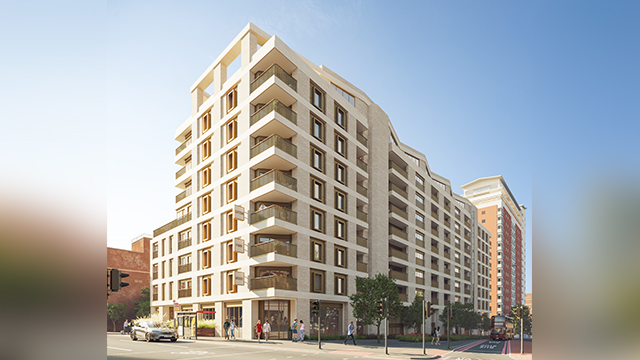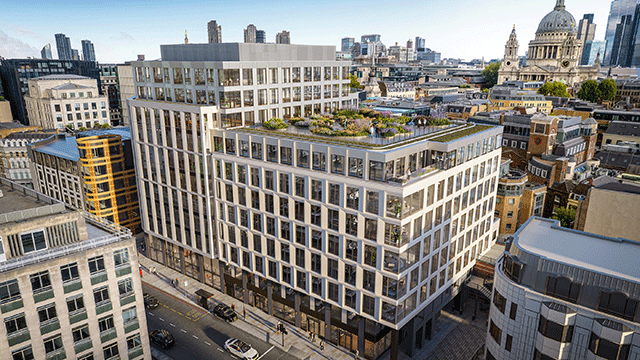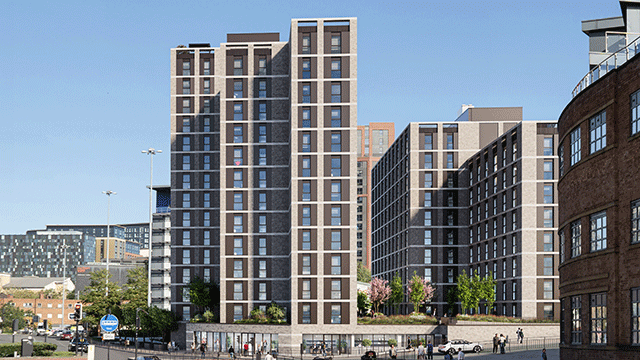Harworth Estates has found a new suitor following its break-up with Peel Logistics. Is its new relationship built to last? David Thame reports
The rebound can be dangerous. Having bounced into, and then out of, a relationship with Peel Logistics, Harworth Estates has now coupled up with Evans of Leeds. It looks like one of those May-to-December things, with Harworth as the new suitor. And it certainly has plenty to offer: the developer emerged from UK Coal in 2012 with a portfolio of 22,295 acres across 144 sites in the North and Midlands.
Evans, on the other hand, is the older, experienced partner, a veteran of the 2m sq ft Fradley Park logistics scheme in Staffordshire. Together they will wrestle with the problem of converting Harworth’s vast acreages into commercially successful schemes.
Is this a relationship that is set to last? With a new speculative development programme about to be unveiled in their shared Yorkshire homeland, and heady romantic talk of deepening the trust, it looks like it is.
The duo plans to kickstart development at the Temple Green site in Leeds with a 150,000 sq ft speculative scheme. Details are now before their respective boards.
Harworth interim Results
£303m
Net asset value at interim results 30/6/2016
£75m
Borrowing limit, up by £10m
2021
Year timetabled for refinancing
900
Number of residential units expected to be in planning by end of year
400,000
Latest phase of development in Bolton to near completion
Source: Harworth
Through Aire Valley Land, their special purpose vehicle, they own the 165-acre site in the Leeds City Region Enterprise Zone. Temple Green (now rebranded Gateway 45) has consent for 2.6m sq ft of B2 and B8 space next to junction 45 of the M1 motorway.
The first four phases, valued at £96m, will deliver more than 1.4m sq ft of high quality industrial, advanced manufacturing storage and distribution space, together with Leeds City Council’s 1,000 space park and ride transport interchange and other treats such as a petrol station, motor dealerships and workshops.
Ian Ball, executive director at Harworth, explains: “We felt it was important to show steelwork going up.” Two units, one of 100,000 sq ft and the other at 50,000 sq ft,0 will be built.
A nine-acre plot is being readied, and the highways extended to service it.
An in-principle decision to build has already been taken, but the details will be agreed in December. Assuming planning permission is granted next spring, the units could be ready for occupation by autumn 2017. The new units will be the first phase on a scheme that could see warehouses of 475,000 sq ft and 395,000 sq ft.
Pricing on the new units is expected to be pitched around £6 per sq ft, a hike on the £5.75 a sq ft typical on new units today.
It is a bold decision in a Yorkshire market that has seen scant speculative development but which seems to enjoy reliably good demand.
When it comes to prelets, Verdion’s £500m, multi-modal 337-acre iPort scheme in South Yorkshire is the star performer.
September saw a 215,800 sq ft letting to Nike logistics partner CEVA Logistics, while in August Amazon scooped up around 1.3m sq ft at the 6m sq ft scheme, as the insatiable online retailer added to its two existing Doncaster depots.
Not surprisingly, Verdion’s success is beginning to inspire others to action. Harworth has already pressed the button to develop another 52,000 sq ft at Rotherham’s Advanced Manufacturing Park. It is expected to complete by March 2017.
Ball says: “We are seeing some speculative development in Yorkshire, but maybe it’s taking time to come through because Yorkshire developers are cautious.”
Evans director James Pitt adds: “The fact is we just haven’t had this kind of site this side of the Pennines.”
The hope is that other developers will follow their lead. “A snowball effect would be good,” says Ball. “Let’s hope it’s a catalyst for the enterprise zone.”
The consensus is that Harworth has chosen wisely. Savills data shows the supply of decent 100,000-200,000 sq ft units in Yorkshire is barely enough for 16 months.
David Wells, director at Muse, has already travelled this road. Muse speculatively developed an 80,800 sq ft unit at nearby Logic Leeds, let to Amazon and now sold to Leeds City Council, and another of 50,500 sq ft let to John Lewis and sold to an AXA fund for £6.2m.
“To develop spec now I’d want to be confident about the size of the units – perhaps going smaller between 30,000-50,000 sq ft, but it’s a difficult call, because the market these days is for parcels people, and that’s a fast moving target,” he says.
Maybe this is why Evans and Harworth are taking their time before pressing the button on the next phase?
Planning for the future
So where next for the joint venture?
Ball says: “Evans has a huge track record and good connections – we value that, and we bring the sites. We’d like to do other things together. I hope we’re in the infancy of this arrangement, but we’d like it to be the start of more wide-ranging relationships.”
Mike Baugh, senior director at CBRE and one of those wishing the partnership well, thinks they will make a good pairing.
“They’re a good match,” he says. “Look at Evans’ record at sites like Fradley Park, and look at Harworth, newer to the game but they’ve done great things at Logistics North, near Bolton. I hope they can emulate something like that here in Yorkshire. It’s a relationship that works, and we’re all excited about that.”
And for the respective shareholders of both Evans and Harworth (a list that, ironically, includes Peel Group), it could be very nice indeed.
The first girlfriend – Peel
Harworth was probably too young to make a lasting relationship with Manchester-based Peel Group.
The so-called “marketing partnership” between Peel Ports and Harworth was formed in February 2014 to handle a combined portfolio of 5,600 acres.
The arrangement ended just a year later in 2015 when Peel signed a £1bn logistics partnership with Macquarie.
Four for Temple Green
The four cupids of the Temple Green site are public sector agencies: the local enterprise partnership, city council, Homes & Communities Agency and Department for Communities and Local Government.
The four put up funding for the £7m first phase of infrastructure at Temple Green, creating 1.2km of dual carriageway and the remediation of 20 acres of development plots for up 1.4m sq ft of new floorspace.
Ian Ball says: “We’ve been pleased and surprised how pro-active the public sector has been. There could be more on the way, but the public sector is not a charity. If you can deliver floorspace and jobs they are there for you.”












